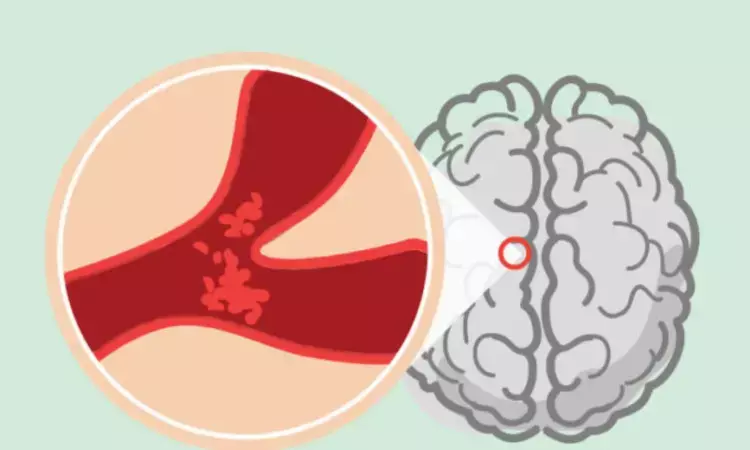- Home
- Medical news & Guidelines
- Anesthesiology
- Cardiology and CTVS
- Critical Care
- Dentistry
- Dermatology
- Diabetes and Endocrinology
- ENT
- Gastroenterology
- Medicine
- Nephrology
- Neurology
- Obstretics-Gynaecology
- Oncology
- Ophthalmology
- Orthopaedics
- Pediatrics-Neonatology
- Psychiatry
- Pulmonology
- Radiology
- Surgery
- Urology
- Laboratory Medicine
- Diet
- Nursing
- Paramedical
- Physiotherapy
- Health news
- Fact Check
- Bone Health Fact Check
- Brain Health Fact Check
- Cancer Related Fact Check
- Child Care Fact Check
- Dental and oral health fact check
- Diabetes and metabolic health fact check
- Diet and Nutrition Fact Check
- Eye and ENT Care Fact Check
- Fitness fact check
- Gut health fact check
- Heart health fact check
- Kidney health fact check
- Medical education fact check
- Men's health fact check
- Respiratory fact check
- Skin and hair care fact check
- Vaccine and Immunization fact check
- Women's health fact check
- AYUSH
- State News
- Andaman and Nicobar Islands
- Andhra Pradesh
- Arunachal Pradesh
- Assam
- Bihar
- Chandigarh
- Chattisgarh
- Dadra and Nagar Haveli
- Daman and Diu
- Delhi
- Goa
- Gujarat
- Haryana
- Himachal Pradesh
- Jammu & Kashmir
- Jharkhand
- Karnataka
- Kerala
- Ladakh
- Lakshadweep
- Madhya Pradesh
- Maharashtra
- Manipur
- Meghalaya
- Mizoram
- Nagaland
- Odisha
- Puducherry
- Punjab
- Rajasthan
- Sikkim
- Tamil Nadu
- Telangana
- Tripura
- Uttar Pradesh
- Uttrakhand
- West Bengal
- Medical Education
- Industry
Thrombectomy safe, feasible for stroke and comparable to best medical management: Study

Germany: Thrombectomy appears to be a safe and feasible treatment option for a rare stroke type with clinical outcomes comparable to the best medical treatment with and without IV (intravenous) thrombolysis, a recent study published in the journal Radiology has found.
The results showed that thrombectomy was a safe and technically feasible option. Within the first 24 hours after treatment, thrombectomy patients had similar outcomes to those who received the best medical treatment alone, with or without intravenous thrombolysis. Longer term, both groups had similar clinical and functional outcomes. Mortality rates were similar in both groups.
Thrombectomy is commonly performed to remove blood clots from brain arteries. It is often done to treat strokes arising from blood clots in the larger arteries that supply blood to the brain. When done promptly, thrombectomy can sometimes be more successful than clot-busting drugs in mitigating long-term damage to the brain.
Recent technological advances have made it possible to perform thrombectomy in some of the narrower vessels in the head vessels, like the anterior cerebral arteries that arise from the internal carotid artery. However, evidence supporting the potential benefit of thrombectomy for these vessels remains unknown.
As part of the Treatment fOr Primary Medium vessel Occlusion Stroke, or TOPMOST trial, researchers in Germany compared thrombectomy with medical treatment in 154 patients. All patients had primary isolated anterior cerebral artery medium vessel occlusions or obstructions. The patients underwent a thrombectomy or the best medical treatment, typically involving medications to dissolve the clot and reduce blood pressure. In some cases, patients may receive intravenous thrombolysis, the introduction of clot-busting drugs to the bloodstream or directly to the clot site.
The researchers assessed early outcome, or outcome within the first 24 hours after treatment, and longer-term functional outcome. They also looked at safety, focusing on bleeding in the brain and death.
“Based on our study, both treatment options appear to be effective and safe,” said study lead author Lukas Meyer, M.D., from the Department of Diagnostic and Interventional Neuroradiology at University Medical Center Hamburg-Eppendorf in Hamburg, Germany. “The study's overall results are consistent with a growing body of literature suggesting that thrombectomy may have a role in treating this type of stroke. Eligible patients should therefore be randomized to ongoing prospective trials whenever possible.”
Dr. Meyer emphasized that the type of blockages his team studied are rare, and all the centres involved in this study were tertiary stroke centres with a high level of expertise in these kinds of interventions.
Selection of patients for thrombectomy remains a key issue, Dr. Meyer said, especially when patients are not eligible for randomization in a designated trial.
“As we anticipate an increasing number of patients with medium vessel occlusions being treated with thrombectomy, age and eloquence of symptoms, in particular, are factors that should be considered when making treatment decisions,” he said. “Ultimately, the results of ongoing randomized trials will provide further insight into this subgroup.”
Dr. Meyer plans to analyse a subgroup of these patients further to gain a deeper understanding of procedural and clinical outcomes. He also wants to identify potential surrogate markers that can predict the clinical course.
“By focusing on this specific patient population, we hope to advance our knowledge further and improve patient outcomes,” he said.
Reference:
Lukas Meyer , Paul Stracke, Gabriel Broocks, Mohamed Elsharkawy, Peter Sporns, Eike I. Piechowiak, Johannes Kaesmacher, Christian Maegerlein, Moritz Roman Hernandez Petzsche, Hanna Zimmermann, Weis Naziri, Nuran Abdullayev, Christoph Kabbasch Published Feb 14 2023 https://doi.org/10.1148/radiol.220229
Dr Kamal Kant Kohli-MBBS, DTCD- a chest specialist with more than 30 years of practice and a flair for writing clinical articles, Dr Kamal Kant Kohli joined Medical Dialogues as a Chief Editor of Medical News. Besides writing articles, as an editor, he proofreads and verifies all the medical content published on Medical Dialogues including those coming from journals, studies,medical conferences,guidelines etc. Email: drkohli@medicaldialogues.in. Contact no. 011-43720751


